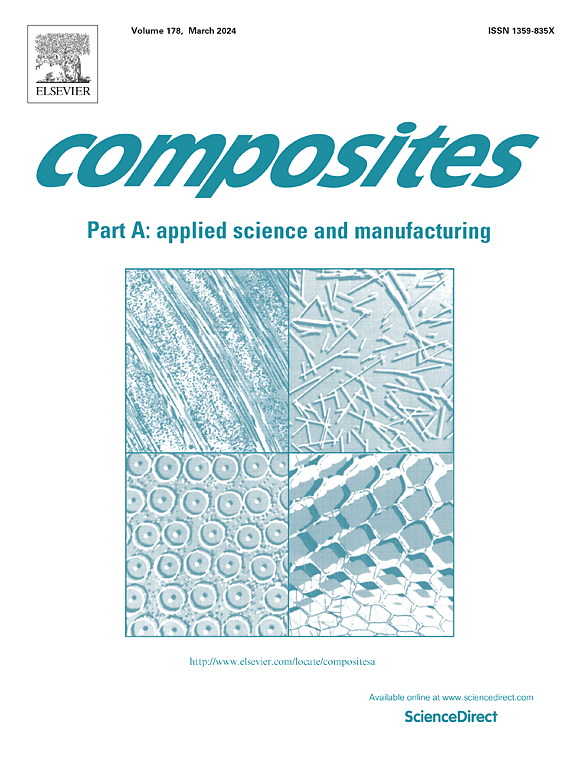通过芯壳橡胶颗粒和无纺热塑性纤维纱实现层间混合增韧的碳/环氧层压板的低速冲击响应
IF 8.1
2区 材料科学
Q1 ENGINEERING, MANUFACTURING
Composites Part A: Applied Science and Manufacturing
Pub Date : 2025-04-16
DOI:10.1016/j.compositesa.2025.108944
引用次数: 0
摘要
本文章由计算机程序翻译,如有差异,请以英文原文为准。
Low-velocity impact response of carbon/epoxy laminates with interlaminar hybrid toughening via core–shell-rubber particles and non-woven thermoplastic fibre veils
Advanced composites (e.g. carbon fibre-reinforced epoxies) have been increasingly used in lightweight, critical applications such as aerospace, renewable energy and defence industries due to their excellent mechanical properties including high specific strength, stiffness and fatigue properties. However, the inherent brittleness of polymer composites makes them vulnerable to low-velocity out-of-plane impact loading, threatening their structural integrity. In this context, enhancing the low-velocity impact resistance of composite laminates is crucial for maintaining their structural integrity and reliability throughout their service life. Therefore, this study explores the low-velocity out-of-plane impact resistance of composite laminates (i.e. consisting of the unidirectional non-crimp carbon fibre fabrics and low-viscous two-part epoxy resin) toughened with core–shell rubber (CSR) particles and thermoplastic veils. The CSR particles varying from 0.1 to 3µm and Polyphenylene Sulfide (PPS) fibre veils with a fibre diameter of µm were used to achieve non-hybrid and hybrid toughening. The impact response of the composite laminates, manufactured with vacuum-assisted resin infusion and out-of-autoclave curing, were characterised with drop-weight low-velocity impact testing in two energy ranges: near the delamination threshold (i.e. 2 J, 3 J, 4 J) and over a broader range (i.e. 2.5 J, 5 J, 7.5 J, 10 J). The results show that the toughening mechanisms derived from the hybrid use of PPS veils and CSR particles effectively enhance the impact resistance of composite laminates up to the delamination threshold. Additionally, the hybrid approach significantly reduces the projected damage area. However, beyond the delamination threshold, the influence of these toughening mechanisms on the impact properties is found to be limited.
求助全文
通过发布文献求助,成功后即可免费获取论文全文。
去求助
来源期刊

Composites Part A: Applied Science and Manufacturing
工程技术-材料科学:复合
CiteScore
15.20
自引率
5.70%
发文量
492
审稿时长
30 days
期刊介绍:
Composites Part A: Applied Science and Manufacturing is a comprehensive journal that publishes original research papers, review articles, case studies, short communications, and letters covering various aspects of composite materials science and technology. This includes fibrous and particulate reinforcements in polymeric, metallic, and ceramic matrices, as well as 'natural' composites like wood and biological materials. The journal addresses topics such as properties, design, and manufacture of reinforcing fibers and particles, novel architectures and concepts, multifunctional composites, advancements in fabrication and processing, manufacturing science, process modeling, experimental mechanics, microstructural characterization, interfaces, prediction and measurement of mechanical, physical, and chemical behavior, and performance in service. Additionally, articles on economic and commercial aspects, design, and case studies are welcomed. All submissions undergo rigorous peer review to ensure they contribute significantly and innovatively, maintaining high standards for content and presentation. The editorial team aims to expedite the review process for prompt publication.
 求助内容:
求助内容: 应助结果提醒方式:
应助结果提醒方式:


